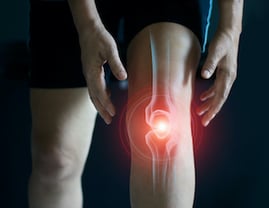
How often are you treating patients afflicted with upper or lower limb musculoskeletal conditions in your medical practice?
In 1982, Extracorporeal Shockwave Therapy (ESWT) was initially introduced into clinical practices to treat urological conditions. Subsequently, it became recognized as safe and effective in the treatment of numerous musculoskeletal conditions. Medical technologies like shockwave (EPAT and ESWT) play a pivotal role in the management of common musculoskeletal disorders of the upper and lower extremities. Both radial pressure wave (EPAT) and focused shockwave (ESWT) technology make it possible for physicians and other medical practitioners to offer robust, evidence-backed, non-invasive treatment options as part of their continuum of care.
Read the full study, Effect of Shockwave Treatment for Management of Upper and Lower Extremity Musculoskeletal Conditions: A Narrative Review.
Why is it important to stay up to date on the latest research and studies on the effectiveness of Extracorporeal Shockwave Therapy?
As a physician or medical practitioner, you recognize that knowledge (backed by science and research) is power. Staying in tune with the latest findings serves you, your practice, and your patients very well. Over the past two decades or so, many published studies have affirmed the effectiveness of shockwave treatment in the management of musculoskeletal disorders. If you want to learn more about improving pain and functional outcomes for musculoskeletal conditions of upper and lower extremities, you’ll want to dive into a narrative review study.
The scientific narrative review featured in The Journal of Injury, Function, and Rehabilitation summarizes the current understanding of the treatment of musculoskeletal conditions with ESWT, accounting for differences in protocols and energy levels. Collectively, studies support that ESWT is a safe, effective, well-tolerated treatment strategy for an array of musculoskeletal conditions commonly seen in clinical practice.
How do Extracorporeal Shockwave Therapy treatment protocols differ in the management of common musculoskeletal disorders?
While the study of ESWT has been ongoing for over three decades, no standardized protocol exists for the treatment and management of common musculoskeletal disorders of upper or lower extremities. That makes perfect sense given that multiple variables are at play: including energy flux density (EFD), number of impulses, type of wave (focused or radial), device used, number of treatment sessions, days between sessions, area of application, and use of pain relievers during treatment.
Thus, the purpose of this review is to synthesize the current available research on the use of ESWT for the management of upper and lower extremity musculoskeletal conditions and identify the best evidence for treatment.
Looking for solutions to treat your patients most effectively? Within the study, upper and lower extremity dysfunctions are explored in relationship to ESWT and include the following:
- Plantar fasciitis
- Achilles tendinopathy
- Patellar Tendinopathy
- Hamstring tendinopathy
- Greater trochanteric pain syndrome (GTPS)
- Medial Tibial Stress Syndrome
- Nonunions, Avascular Necrosis, Stress Fracture
- Patellar Tendinopathy
- Hamstring tendinopathy
- Tendinopathy of the Shoulder
- Lateral Epicondylitis
What is the Physiology of Extracorporeal Shockwave Therapy?
Shockwaves have specific characteristics, including nonlinearity, high peak pressure followed by low tensile amplitude, short rise time, and short duration. The aspects mentioned above generate a positive and negative phase of shockwave, which results in regenerative healing outcomes. It’s important to highlight the power of the shockwave peak pressure, which is approximately 1000 times greater than the peak pressure of an ultrasound wave. There are two main types of shockwave used in clinical practice:
- Focused shockwaves, known as Extracorporeal Shockwave Therapy (ESWT), are generated by electrohydraulic, electromagnetic, and piezoelectric devices. ESWT is known to have higher energy and generate maximum force at a selected depth.
- Radial pressure waves, known as Extracorporeal Pulse Activation Technology (EPAT), are lower energy and generate the highest pressure at the skin surface and weaken at greater depths.
Want to learn more about how the study was conducted?
Leading physicians Julia M. Reilly, MD, Eric Bluman, MD, Ph.D., and Adam S. Tenforde, MD conducted this impressive narrative review. You’ll appreciate the depth and breadth of the research reviewed for the study and the concise manner in which results are presented. The bulk of primary materials compiled and examined were sourced from PubMed and the conditions treated are conveniently divided into disease states.
This team of physician-researchers thoroughly reviewed the articles on upper and lower extremity musculoskeletal conditions. The team took a deep dive into various research studies, including retrospective and prospective studies, and noted whether they included a control group, were blinded or used a placebo. You’ll also find that primary and secondary outcome measures for each study were also reported.
Complete, detailed findings can be viewed by diagnosis within the research publication; click here to view the comprehensive study
This literature study confirms the pain-relieving and functional benefit of using ESWT for common upper or lower extremity tendinopathies. Overall, ESWT has been shown to deliver multiple effects contributing to tissue healing and pain relief for many challenging musculoskeletal conditions of both upper and lower limbs.
CuraMedix is dedicated to providing medical professionals with the latest emerging medical technologies. The company represents STORZ Medical as the leading full-service U.S. distribution partner supporting the complete suite of STORZ Medical devices to include product sales, education, service and support for the full spectrum of radial pressure wave (R-PW), focused shockwave (F-SW), and now “High Energy” Magnetotransduction (EMTT) devices.
Are you considering adding shockwave to your continuum of care for your medical practice? Contact us today to speak with a shockwave expert.


